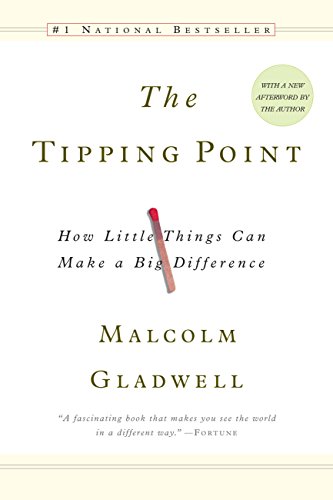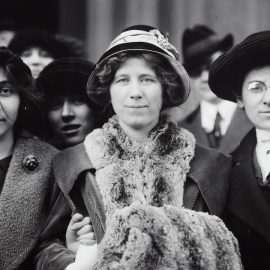

This article is an excerpt from the Shortform summary of "The Tipping Point" by Malcolm Gladwell. Shortform has the world's best summaries of books you should be reading.
Like this article? Sign up for a free trial here .
What is the Broken Window Theory in criminology? How has Wilson and Kelling’s broken windows theory been used to reduce crime in places like New York City?
The Broken Window Theory is a sociological theory that says that smaller signs of disorder — like broken windows left in disrepair on a building — send the message that anything goes. This subtle message leads to greater crime and public disorder. It was developed by James Wilson and George Kelling.
We’ll look at how the broken window theory in sociology has been used to reduce crime.
Broken Window Theory in Criminology, Case Study: Reducing Crime in NYC
During the 1980s, New York City had some of the highest crime rates in its history. Suddenly, in the 1990s, crime rates plummeted faster and more dramatically than any other city during that same period.
This drop appeared to be an anti-crime epidemic in how quickly and widely it took hold, but it didn’t really follow the first two principles of epidemics — The Law of the Few and The Stickiness Factor.
- First, it’s not as if Connectors, Mavens, or Salesmen were broadcasting a message across New York City that now is the time to run amok with crime, or now is the time to collectively stop.
- Second, crime is not one specific idea, product, or message. Crime is a collective term for a wide range of actions and behaviors, which each have their own complex set of contributing factors (e.g. the reasons for a rise or fall in home burglaries can be completely different than the reasons for a change in the murder rate). It’s hard, if not impossible, to pinpoint a stickiness factor for such a range of actions and behaviors.
NYC’s anti-crime epidemic relied strongly on the third principle, The Power of Context. The change in context had to do with a policing approach called the Broken Window Theory, which says that smaller signs of disorder — like broken windows left in disrepair on a building — send the message that anything goes. This subtle message leads to greater crime and public disorder. In other words, the environment is spreading a message that changes people’s behavior and leads to an epidemic.
Initially, NYC police’s Broken Window Theory criminology approach led them to tackle graffiti in the subway systems. They made enormous efforts to keep trains clean of graffiti in order to send the message that someone was paying attention and even small infractions would not be overlooked.
Then, transit police cracked down on fare-beating, when people would hop subway turnstiles or find other ways to get onto the trains without paying the fares. Again, if one person skipped paying the fare, it signaled to other passengers that they shouldn’t have to either. That mentality easily snowballs into defiance against other, more serious rules as well.
The transit police had to take a gamble on putting so much effort and resources on fare-beating — which, in isolation, is a small offense — at a time when more serious crimes on the subway were at an all-time high. It can be challenging to put the Power of Context to practice because making small contextual changes to create a big impact feels counterintuitive. But if you make the right changes, you’ll see the results.
After seeing results from their strategy in the subway system, NYPD implemented the Broken Window Theory approach across the city. Officers targeted minor crimes including public drunkenness, public urination, throwing empty bottles on the street, and minor property damage. Ultimately, violent crimes dropped in the subway system and across the city, and NYPD administrators believed the Broken Window Theory criminology approach deserves the credit.
The mayor and police chief reasoned that enforcing minor infractions sent the message that no criminal activity — even seemingly insignificant offenses — would be tolerated. That message spread and altered would-be criminals’ behavior, reversing the crime epidemic, or alternatively creating an anti-crime epidemic. This exemplifies the Power of Context, illustrating how small environmental changes can tip an epidemic. This is the Broken Window Theory in criminology.
(Shortform note: Since Tipping Point was published, alternative hypotheses for the reduction in crime have been proposed.
- The lead-crime hypothesis claims air pollution from leaded gasoline played a significant role in the rise of violent crime in the 1960s, ‘70s, and ‘80s, as well as the dramatic drop in crime in the ‘90s and ‘00s. As leaded gasoline use rose steadily after World War II, the babies born during and after that era were exposed to higher levels of lead in the air and experienced more lead poisoning, which affects brain development. As those children became teenagers and young adults, crime rates climbed. Then, when the U.S. phased out leaded gasoline in the early 1970s, the reverse happened: Babies born around that time had less lead exposure and collectively committed fewer crimes as teenagers and young adults in the ‘90s and ‘00s.
- Economists John J. Donohue III and Steven D. Levitt, author of “Freakonomics,” propose another theory that the legalization of abortion in New York in 1970 (three years before Roe v. Wade made it legal nationwide) led to fewer children who would have been at greater risk of becoming criminals when they reached adolescence and adulthood in the 1990s. This is a controversial hypothesis that critics have said doesn’t account for other contributing factors, such as decreased drug use and population changes.
There isn’t consensus yet on a definitive answer, but the Broken Window theory in criminology still illustrates the role of context on behavior.)
———End of Preview———

Like what you just read? Read the rest of the world's best summary of "The Tipping Point" at Shortform . Learn the book's critical concepts in 20 minutes or less .
Here's what you'll find in our full Tipping Point summary :
- What makes some movements tip into social epidemics
- The 3 key types of people you need on your side
- How to cause tipping points in business and life






